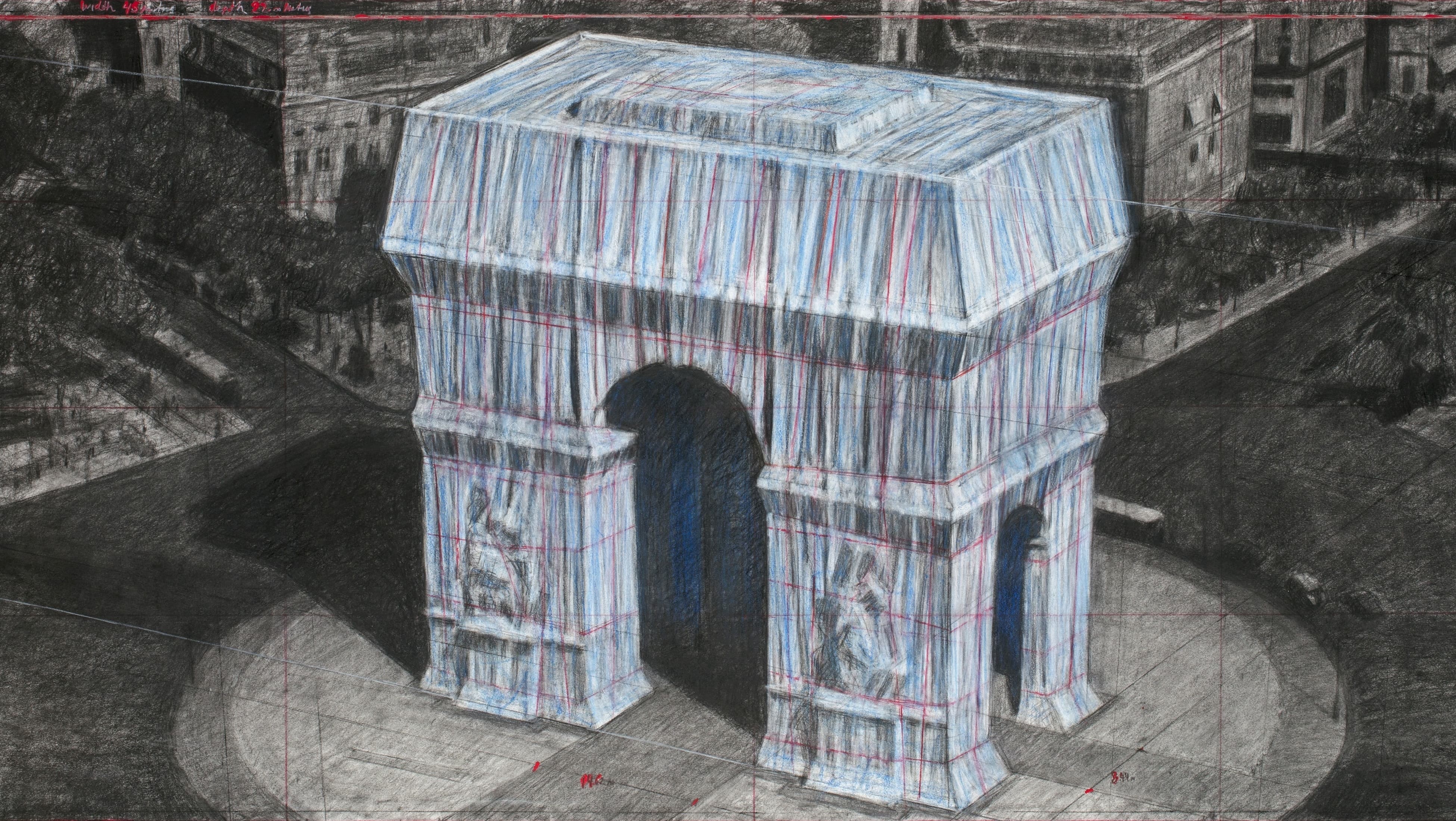
Did Christo make art?

About the Arc de Triomphe packaging
Since 12 September
It was easy to be artistically embraced by Christo in the 1980s. It was new. What was new? Destabilising the eye by introducing an unexpected element into the everyday. A gratuitous thing that served no purpose and which, at the same time, was hastily given the name of 'art'. It was enough for this intervention in the urban space to take on monumental proportions for it to strike the crowd as much as it spoke to the child that never grows up in each individual. Because of the change of scale that it systematically operates, there is always something childish about a work of Christo.
Isn't this typical eighties shift definitely outdated today? Of course it is. The theory of displacing images onto a surprising medium to give them social visibility and therefore a collective meaning born of an almost philosophical questioning is clearly no longer in the air. Toscani's Benetton advertisements, born of this theory, would cause an outcry today. The questioning of everyday life through the intrusion of an incongruous element can therefore in no way be invoked to make Christo and Jeanne-Claude's Arc de Triomphe packaging a major artistic event of 2021. The secret of this success lies elsewhere.

The wrapping of the Arc de Triomphe is an event precisely because of its eventful nature. Its media value. It is the gigantism that appeals. One thinks here of those tourists who have already booked their ticket for a cruise aboard a replica of the Titanic, the climax of which will be a stopover right on the spot where the wreck of the original lies. Structurally, it's the same, as Roland Barthes would say. We have a mythical monument, here the Arc de Triomphe and there the liner of the masters of the world. And we intervene on this historical object like Koons puts a balloon dog in Versailles. The place is prestigious, the art that is displayed there will be all the more spectacular. And more "offbeat" in the sense of original. In other words, a little crazy but totally harmless. Like a giant sheet thrown over a triumphal arch.
By including art in reality to such an extent, we abolish any critical dimension that this confrontation might signify. It is defused to make works that are all the easier for institutions to recuperate. But it is obvious that the managers of the Art de Triomphe prefer this peaceful textile homage to the rampage its statues have recently undergone. Take away any idea of defending a great cause, even if it is a boat, and you can ask yourself what would be left of JR's disproportionate photographic installations? An artist who benefits from the exceptional resonance chamber of a mythical or historical site can rarely do without the interested but artistically or at least aesthetically complicit support of one or more institutions? Humanism is a consensual meeting ground.
We are therefore talking about Christo's Arc de Triomphe wrapping as a posthumous work desired by the artist but intended today as an institutional event. During his lifetime, Christo financed his installations through the prior sale of sketches, paintings and models. Were these the originals? In any case, these documents all contained the very added value of Christo and Jeanne-Claude's work: the idea. Perhaps this is where the problem lies in the end. You can make a work of art that is just an idea say whatever you want. Even if it means having to skilfully unfold and pleat 25,000m² of recyclable blue-silver polypropylene fabric.
Illustrations:
- Christo and Jeanne-Claude 2021 Triumphal Arch Packaging Model
- Packaging for the Christo and Jeanne-Claude 2021 triumphal arch





































































